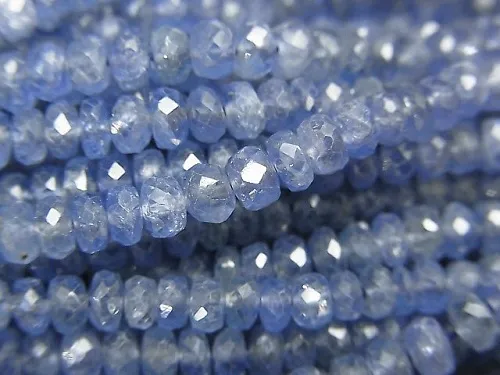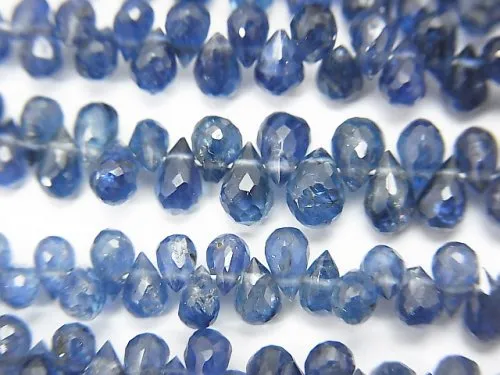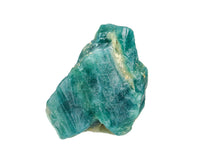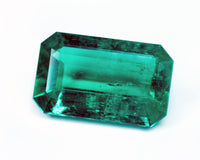- 1. Sapphire
- 2. The History and Meaning of Sapphire
- 3. Physicochemical Properties of Sapphire
- 4. Sapphire Colors
- 4-1. Blue Sapphire
- 4-2. Black Sapphire
- 4-3. Pink Sapphire
- 4-4. Yellow Sapphire
- 4-5. White Sapphire
- 4-6. Purple Sapphire
- 4-7. Star Sapphire
- 5. Healing Properties and Metaphysical Properties of Sapphire
- 6. Sapphire for sale by KenKenGems
Sapphire
One of the four precious gems and September birthstone, sapphire is loved for its mesmerizing color, outstanding hardness, and luxurious luster. A stone of kings in the past, it is a sought-after choice among fashionistas and gemstone connoisseurs in the present. If you’re considering buying sapphire, it won’t hurt to learn more about its varieties and properties.

The History and Meaning of Sapphire
We don’t know for sure why the mineral is called like that. However, we know that its name is consonant with the ancient Greek ‘sappheyros’ and the Semitic ‘sapir’, both mean a blue stone. Besides that, the Babylonian ‘sipru’ stands for scratching and the Sanskrit ‘sanipriya’ translates as the jewel of Saturn.
Legends and myths associated with sapphire are as mysterious as the stone itself. In ancient Greece, sapphire was the sacred stone of Zeus. Priests of the temple of Jupiter in ancient Rome wore sapphire rings to obtain secret knowledge. The ancient Persians believed that the Earth rests on a giant sapphire that gives the sky its blue color. The throne of King Solomon was adorned with star sapphires while its seal, a symbol of wisdom and justice, was carved from a large precious stone.
It is said that the Tablets of Stone were made of sapphire because its blue color reminded the sky and heaven. Besides, the color of sapphire was associated with the color of the Divine Throne of God. The followers of the ‘great creator of the world’ Brahma are sure that sapphires are petrified drops of the drink of immortality from the heavenly palaces on Mount Kailash. Since time immemorial, the most prominent rulers revered sapphires as a symbol of holiness and inviolability of their power.

Physicochemical Properties of Sapphire
Precious blue sapphire is a mineral of the corundum class. It owes its statement color to the inclusions of titanium and iron in its crystal lattice.
Sapphire boasts a hardness of 9 on the Mohs scale, diamond is the only gem that is harder. This property is highly valued in jewelry because hard stones aren’t prone to wear and tear. Gem-quality sapphires are rarely available in large sizes. And when you do come across such specimens, their price is higher than diamonds’.

Sapphire Colors
It’s common to believe that sapphires are exclusively blue. The truth is that they offer a great variety of colors but some of them are so thin on the ground that they can be seen only in private collections.
Blue Sapphire

Blue is the most iconic and the most precious color of the mineral. In the commercial classification, the most prized are Royal Blue (deep dark blue) and Cornflower Blue (bright rich blue) varieties. Minerals that come from the city of Kashmir on the border of India and Pakistan are in a class of their own due to their clarity and color vibrancy. The price for Kashmir cornflower blue sapphire starts at $350 per carat, and large specimens are two to three times more expensive per carat.
Black Sapphire

Dark colors are provided by the inclusions of titanium and iron. Black sapphire is mined in Kashmir, Sri Lanka, Tanzania, Thailand, and Australia. Black faceted minerals generate a very bright luster.
Pink Sapphire

Pink gems are typically called ‘padparaja’, which means lotus flower. These sapphires provide a range of shades from delicate pink to bright purple. Gem-quality specimens are one of the rarest and most expensive. Very beautiful stones of this type are mined in Thailand and Sri Lanka.
Yellow Sapphire

Admixtures of iron color sapphires yellow, and the tint varies from pastel yellow to rich orange. The most beautiful specimens of warm-colored sapphires are mined in Sri Lanka, Myanmar, Tanzania, and Thailand.
White Sapphire

White or colorless sapphire is a rarity, at least natural ones. The largest deposits are located in the USA, Brazil, Africa, and Southeast Asia.
Purple Sapphire

Thanks to their color, purple sapphires look luxurious and noble. Sometimes, this variety of the stone is called Oriental amethyst. Admixtures of vanadium give sapphires this gorgeous color.
Star Sapphire

While most sapphires are clear, this variety is opaque. These blue, black, red, and purple minerals boast the optical phenomenon of asterism, i.e. they showcase a shimmering star. It is clearly visible when stones are cut en cabochon.
Genuine sapphires extracted from the depths of the earth are not at all as beautiful as they appear in jewelry and gemstone catalogs. Their colors tend to be pale and cloudy. To make these precious stones more attractive, they are treated in various ways such as exposure to high temperature, impregnation, irradiation, diffusion, etc. Besides, there are artificially grown sapphire crystals, which look grand but are not as valuable as the real thing. Before you buy sapphires, you need to find out about their origin and treatment method.

Healing Properties and Metaphysical Properties of Sapphire
Sapphire is revered as a heavenly gem and a receptacle of cosmic energy. It is also a symbol of wisdom, justice, purity, and spirituality. In many cultures, sapphire was entrusted with a mission to decorate temples. They used to be the prerogative of priests and clergymen because it was believed that their color and appearance contributed to the unity of people and God. Due to their ability to purify energy, sapphires are often used in meditation. It is a stone with very strong but calm energy. Sapphires pacify passions, awaken the power of reason, as well as strengthen the spirit and will. Blue corundums promote loyalty, bring peace and love to one’s life, and protect against betrayal, gossip, and slander.
In ancient times, sapphires embellished goblets because the stone is able to recognize poison and act as an antidote. Today, lithotherapy recommends using these precious stones to treat eye, respiratory, cardiovascular diseases as well as relieve insomnia. On top of that, the stone has a calming and relaxing effect.

Sapphire for sale by KenKenGems
You like the idea of getting sapphires but you are scared of their prohibitively high cost? With KenKenGems, precious stones become affordable. We supply a generous variety of natural and treated sapphires that won’t cost you an arm and a leg. Available in so many striking colors, displaying asterism, and color transitions, our stones would take pride of place in your gemstone collection.




